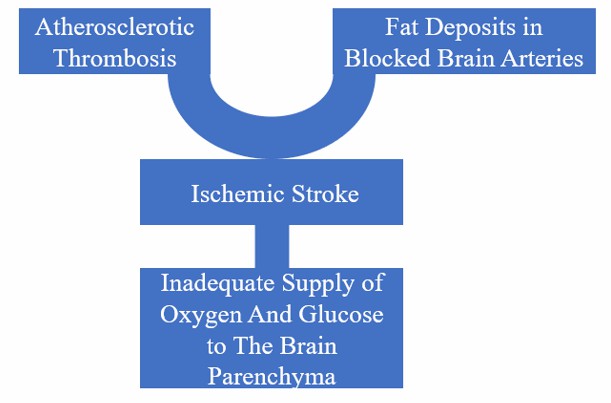Stroke is a classic geriatric disease. Each year, more than 795,000 people in the United States suffer a stroke. Of these, about 610,000 are first strokes, while 185,000 occur in patients who have had a stroke before. Stroke is considered the third leading cause of death and a significant cause of long-term disability and cognitive impairment. Although research into stroke has been ongoing for decades, reperfusion with recombinant tissue plasminogen activator (rtPA) remains the only FDA-approved drug for treating stroke. Although the incidence of stroke has declined and survival has improved over the past 20 years, the absolute number of strokes occurring, stroke survivors, related deaths, and the overall global stroke burden continue to increase each year. Therefore, it is urgent to accelerate the understanding of the injury mechanisms of stroke and to facilitate the development of new therapies for stroke.
Ischemic Stroke
Generally, 80% of stroke patients are ischemic stroke patients, and there is a wealth of research related to the mechanism of injury and therapy development for ischemic stroke. Ischemic stroke is a cerebrovascular infarction caused by blockage of cerebral arteries by blood clots and/or fatty deposits due to atherosclerosis. Cerebrovascular occlusion results in inadequate oxygen and glucose supply to the brain parenchyma, causing a range of responses including blood-brain barrier dysfunction, excitotoxicity, neuroinflammation, and oxidative stress. These responses are biological defense mechanisms under ischemic stroke but can cause damage to brain parenchyma if activated intensively and continuously.
Thrombolytic (fibrinolytic) drugs, antiplatelet drugs, and anticoagulants are currently the main treatments. However, these treatments are often not widely effective due to the high number of contraindications. Many targets targeting the ischemic stroke process have been identified and research on targeted drug development is also underway. In addition, cell therapies and immunotherapy for the treatment of stroke are in continuous development.
Hemorrhagic Stroke
Hemorrhagic strokes account for about 20 percent of all strokes. A hemorrhagic stroke can occur when there is an abnormality in a blood vessel in the brain that becomes weak or when the blood pressure is too high. It is caused by the rupture of a blood vessel, resulting in intracerebral hemorrhage into the brain parenchyma or subarachnoid hemorrhage into the subarachnoid space. The disease is characterized by a high mortality and morbidity rate. Once a hemorrhagic stroke strikes, it tends to deteriorate rapidly because the hemorrhage usually expands rapidly, leading to a sudden deterioration of consciousness and neurological disturbances. Chronic hypertension is a common cause of intracerebral hemorrhage whereas ruptured cerebral aneurysms are a common cause of subarachnoid hemorrhage. Current conventional therapies for hemorrhagic strokes include general therapy (air protection, blood pressure management, and glucose control), hemostatic treatment, complication prevention, and rehabilitation. Despite conventional therapies do have therapeutic benefits, there are still many challenges in managing hemorrhagic strokes. Therefore, there is a long way to go in research on hemorrhagic stroke.
There are some biological companies specializing in pre-clinical CRO services for stroke. These companies can provide services such as basic research and stroke therapy development. They work with pharmaceutical firms and academic institutions to gain insight into the pathogenesis of stroke and develop more effective treatments.
Reference
Barthels, D.Das, H., Current advances in ischemic stroke research and therapies. Biochim Biophys Acta Mol Basis Dis, 2020. 1866(4): p. 165260.





Comments